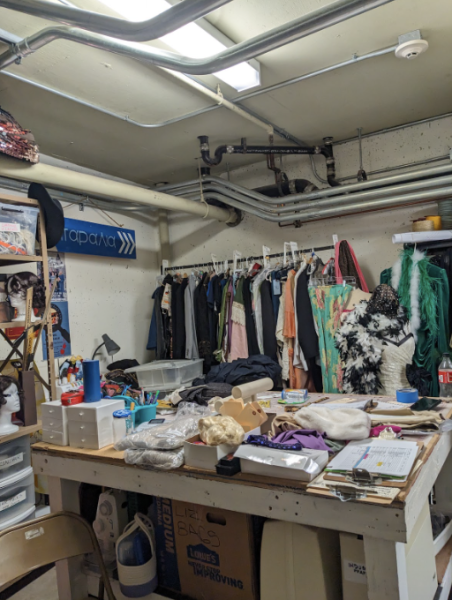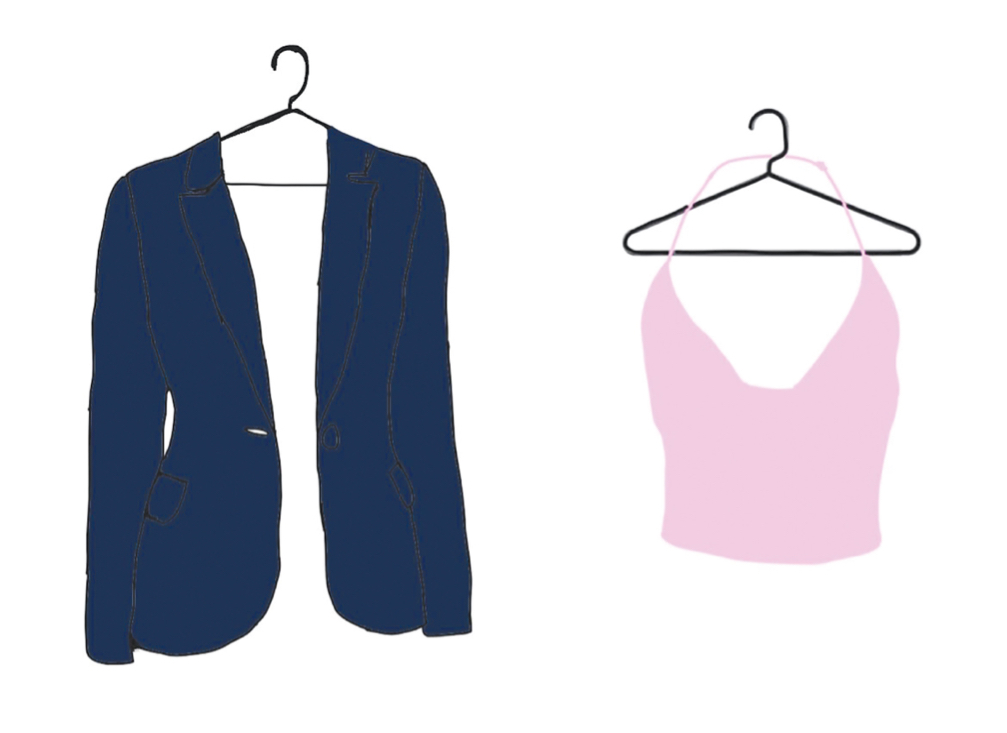For a character to truly come to life in a production such as Singin’ in the Rain, an actor works for months to learn their lines, rehearse their interactions with other characters, and to distinguish who they believe the character to be (often within a set of loose guidelines). However, some of the most important character development can come from what the actors are wearing. Costumes are iconic windows into the personality of a character and what would Singin’ in the Rain be without the classic raincoats, boots and umbrellas?
The Team
Here at San Marcos, we have an excellent team of students who work with head costumer Renee Levy and assistant head costumer Hannah Chilton to create, piece together, and find the beautiful costumes that are performance-ready. This semester, there are four students who are helping the head costumers: sophomores Abby Gonzalez, Kaia Sandoval, Grace Triado, and junior Isabelle Chabinyc. These students spend their fourth periods in the Play Production class below the theater, ‘banished’ to what is affectionately referred to as, “the dungeon.” Below the stage there are three small rooms, the two larger rooms are used as dressing rooms for the actors and actresses while the other, smaller one is a glittering room filled with sequins, hats, dresses, sewing machines, and thread. This is the land of the costumers.

Student costumers learn how to sew a hem, some basic hand sewing, as well as machine sewing. In addition, they learn about breaking down a script for costumes and how to keep track of the numerous costumes in each show.
“I enjoy learning new skills like sewing,” said Sandoval. “I learned how to iron which is really fun and a good life skill and also how to speak up.”

(Keira Perkin)
The Process
When the department receives a script for a production, the first step is mapping out what happens within the play such as whether it is day or night, what day of the script it is and/or what season it is. This is all recorded on a big chart that details what each actor is wearing and when exactly they change.
Then comes the inspiration. A lot of thought goes into the production’s costumes being as historically accurate as possible so that the dress that is sent up on stage has been seen in one form or another in the decade of the show.
Finally, costumes are made, found from the collection, bought, borrowed, or upcycled. The upcycling of a costume is a really exciting process because something already made can be enhanced with trim, beads, ribbons, and in the case of the 20’s, fringe.
“Renee will have a little list for us and then we will take [the list] and everyone’s size [to storage] and we will bring a measuring tape to measure the waist of pants or shirts to figure out if it will fit the actor,” said Sandoval.

(Keira Perkin)
Where do all the clothes come from?
A costume department cannot be run without many, many costumes. These costumes are collected and saved year after year. Many of the costumes, especially costumes from different periods and decades, came from donations from students, their grandparents, and other community members. Something that could be seen as social suicide in public often finds its perfect home among the sequins, ball gowns and feathers of the theater costume department. So if you have any pieces in your wardrobe that never see the light of day, consider donating them to the costume department by dropping them off in M-5 or in the theater, the costume department would be very happy to have them.
Would you be able to change clothes in 15 seconds?
In addition to all of their other jobs, each of the students are backstage during the productions helping actors with quick changes. Because Singin’ in the Rain is a production with a plot that spans many days, costumers are kept busy as each of the main characters has a different costume, or sometimes two for each day of the story. In fact, there are around 15 quick changes in the span of the hour and 45- minute long show. Some are as short as 15 seconds while the average change is normally under one minute. Milo Bustany, who plays Don, the lead, has 7 quick changes in total but most actors in the production have only three or more (which is still a lot!).

Hair and Makeup
When an actor needs a wig, costumers are on hand to help to get the wigs on and off. All actors do their own makeup and most end up doing their own hair which involves some at home practice especially if it is a complicated hairstyle. However, for the few who are leads, their hair is more likely to be under a wig which means they will have their hair done for them by Levy.
Our small but mighty costume department is certainly not one to miss in the wonderful productions put on by the theater department. Be sure to catch Singin in the Rain in the next two weeks of their run time. The show opens Thursday, May 2 at 7pm and tickets can be bought online or at the door. Pay a visit and pay special attention to those costumes and their details because a lot of thought and time went into them.





















